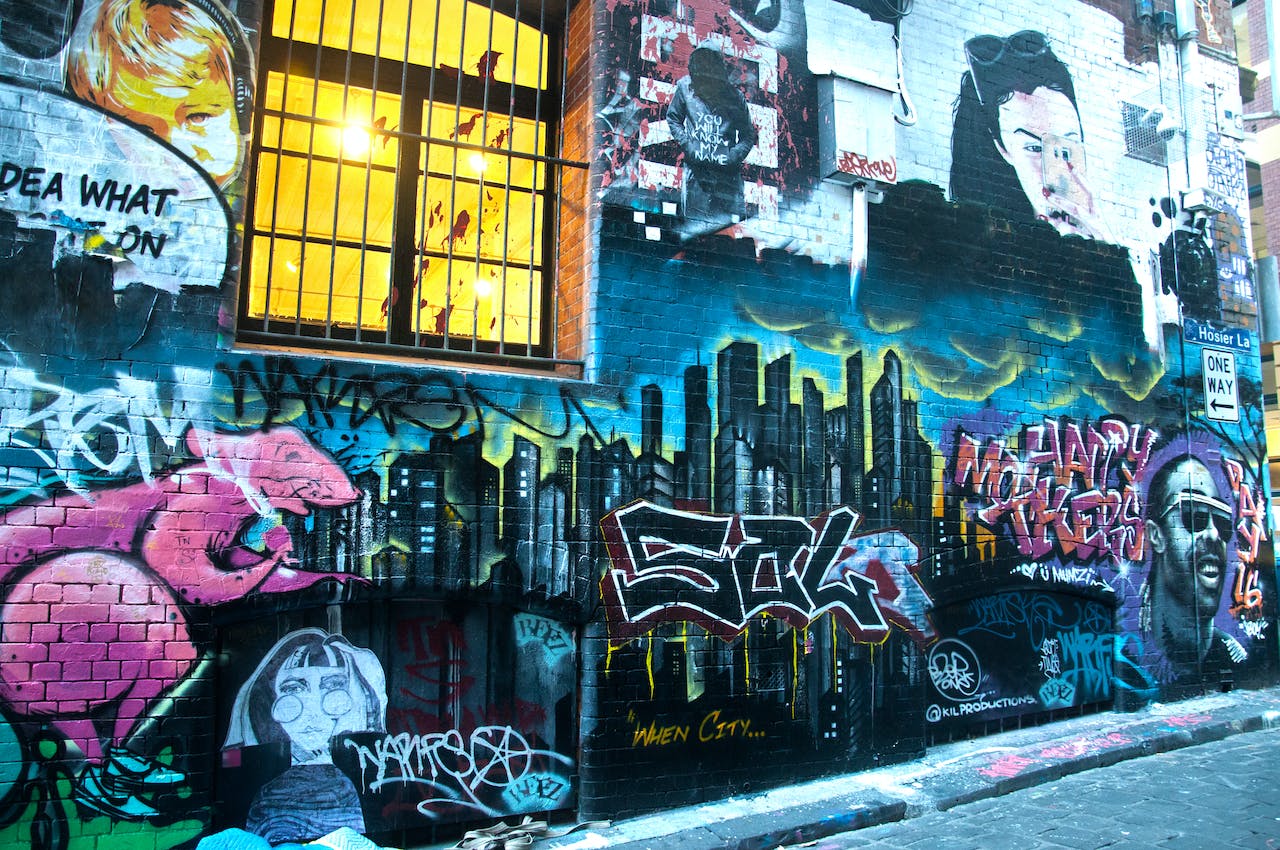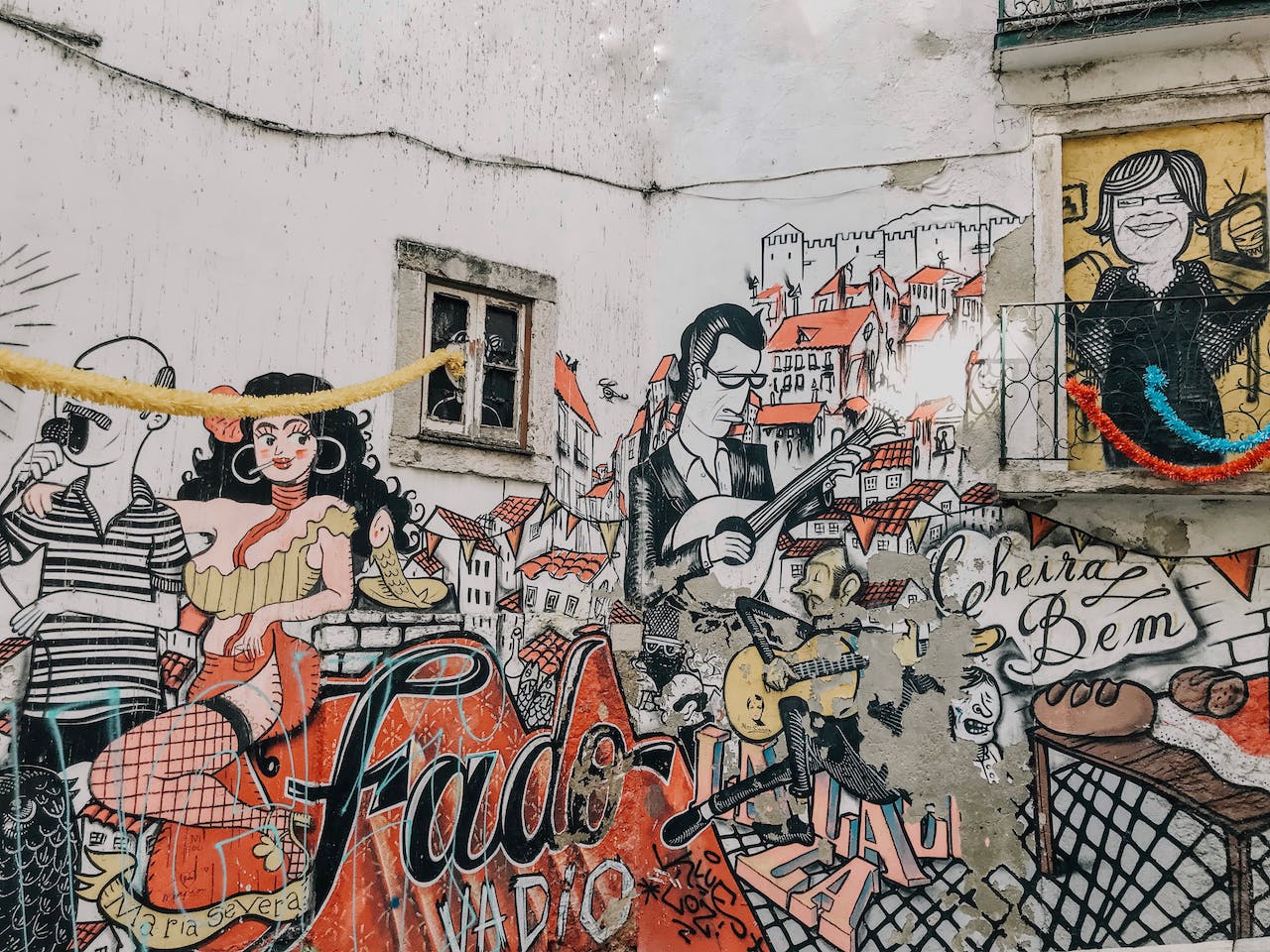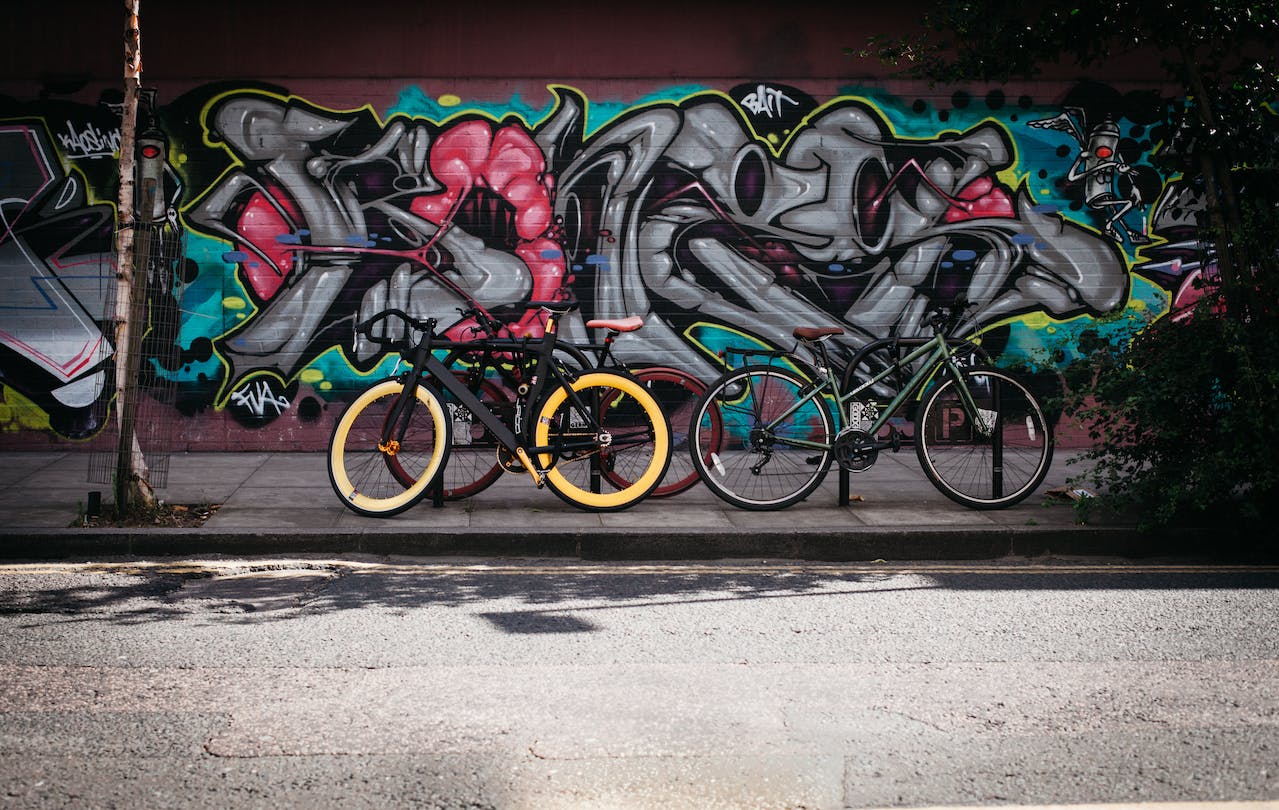Graffiti art, once seen as a defiant act of vandalism, has evolved into a significant and vibrant component of urban culture, particularly in bustling metropolises like New York City. This form of artistic expression, characterized by its vivid colors, bold messages, and unique styles, paints the concrete canvases of city streets, subway cars, and towering buildings, telling the untold stories of the city’s heart and soul.
In this blog, we delve into the captivating world of graffiti art in New York City, exploring its origins, evolution, and the indelible mark it leaves on the fabric of urban culture. Join us as we navigate the vibrant streets and alleyways of the Big Apple, uncovering the stories and artists behind the spray cans and stencils that transform the city into a living, breathing gallery of contemporary art.
The Dawn of Graffiti in the Big Apple
Economic Turmoil and Urban Decay
In the 1970s, New York City was engulfed in an economic maelstrom that led to widespread urban decay. The financial crisis, marked by budgetary constraints and fiscal mismanagement, precipitated a domino effect across the city’s infrastructure and social fabric. Neighborhoods that once buzzed with activity and commerce were left to wither, their buildings abandoned and public spaces neglected. This deterioration was not just physical but deeply psychological, casting a pall of despondency over the city’s residents, particularly its youth. With traditional avenues for expression and engagement dwindling, a void was created, one that was soon filled by the emergent voices of graffiti artists. These young individuals, armed with spray cans and a desire to be heard, turned the city’s dilapidation into a canvas, signaling the birth of a vibrant but controversial art movement.
Graffiti, in this context, was more than mere defacement; it was an act of reclamation and defiance. The youth, disillusioned by the urban decay and the apparent abandonment by civic authorities, found in graffiti a powerful medium to assert their presence and articulate their frustrations. The art form became a visual rebellion against the status quo, transforming the blighted cityscape into a mosaic of color, commentary, and creativity. Subway cars, once symbols of the city’s decline, were reborn as moving galleries, showcasing the raw talent and unfiltered voices of New York’s forgotten youth. Through these acts of artistic insurgency, graffiti artists not only reclaimed derelict spaces but also sowed the seeds of a cultural phenomenon that would eventually gain global recognition and respect.
Discover the plethora of Vibrant Activities in the Big Apple. Visit Unlocking the City’s Magic – Top Group Activities in New York City for an Unforgettable Experience.
Birth of Tagging Culture
Introduction to Tagging
The origins of graffiti in New York City can be traced back to the late 1960s and early 1970s, a time when the simple act of tagging began to take root among the city’s youth. Tagging involved individuals writing their names or aliases in distinctive, stylized scripts on public surfaces, from the sides of buildings to the backs of subway seats. This practice was less about the artistry of the piece and more about the statement it made. Each tag was unique, serving as a personal signature that marked the presence of the tagger in the urban landscape. The simplicity and immediacy of tagging made it accessible to many, requiring little more than a marker or can of spray paint to participate.
Significance
The rise of tagging culture in New York was emblematic of a deeper need for self-expression and identity establishment among the city’s youth. In an era marked by social and economic upheaval, many felt marginalized and overlooked by the broader societal structures. Tagging became a way for these individuals to assert their existence within the chaotic urban environment. Each tag, while seemingly insignificant on its own, contributed to a larger tapestry of voices clamoring to be recognized. This form of expression was particularly resonant in neighborhoods that were underserved and overlooked, where tagging offered a form of visibility and a sense of belonging. Over time, the proliferation of tags across the city created a dialogue between taggers, evolving into a complex subculture with its own codes, rivalries, and camaraderie.
The Struggle for Legitimacy
Despite its artistic evolution, graffiti has always had a contentious relationship with the law and public opinion. The city’s authorities, viewing graffiti as a sign of decay and lawlessness, launched aggressive cleanup campaigns. The ‘war on graffiti’ reached its zenith under Mayor Ed Koch in the 1980s, with the city investing heavily in removing graffiti and implementing policies to keep subway cars clean.
However, the pushback against graffiti often overlooked the socio-political commentary embedded in the work, the artistic talent of the creators, and the cultural significance of the movement. Graffiti was, and remains, a voice for the voiceless, a form of protest and empowerment for marginalized communities, and a critical commentary on issues such as poverty, inequality, and racial injustice.
Pioneers of the Movement
TAKI 183
Among the early architects of New York’s burgeoning graffiti scene was a Greek American teenager from Washington Heights known by his tag, TAKI 183. His simple yet ubiquitous tags, which combined his nickname “Taki” with the street number where he lived, began appearing across the city, from subway cars to public walls, turning mundane urban surfaces into a backdrop for his personal signature. TAKI 183’s day job as a foot messenger provided him with the unique opportunity to traverse diverse neighborhoods, allowing his tags to proliferate across a wide swath of the city. This widespread visibility made TAKI 183 a legendary figure among the youth, sparking intrigue and admiration. His actions, chronicled in a 1971 New York Times article, not only catapulted him to fame within the graffiti community but also highlighted graffiti as a burgeoning cultural phenomenon. Inspired by his example, a wave of young New Yorkers began to take up markers and spray cans, each seeking to make their own indelible mark on the city’s landscape.
Legacy
The impact of TAKI 183 and his early contemporaries on the graffiti movement cannot be overstated. They transformed tagging from a clandestine activity into a widespread urban tapestry, interwoven with the city’s very identity. This initial wave of taggers laid the essential groundwork for what would evolve into a rich and diverse graffiti culture. Their tags, characterized by boldness and ubiquity, ignited a competitive and creative fervor among emerging graffiti artists. This competitive spirit drove artists to innovate, not just in the complexity and style of their tags, but also in the locations they chose, often seeking out more daring and visible canvases to showcase their work. The legacy of these pioneers is seen in the way graffiti expanded in scope and ambition, moving from simple tags to intricate murals and pieces that addressed a range of themes from social justice to personal triumphs. Their foundational work established graffiti as a potent form of urban expression and laid the cultural and artistic groundwork for future generations of artists, ensuring that the essence of graffiti would continue to evolve yet remain true to its roots as a form of rebellious self-expression and identity.
Other Pioneers of the Graffiti Art in NYC
Several pioneering artists played crucial roles in the evolution of graffiti art in New York City beyond TAKI 183. These individuals expanded the scope, style, and visibility of graffiti, helping to transform it from simple tagging into a sophisticated form of urban art:
- Cornbread – Often credited with being the first modern graffiti artist, Cornbread started tagging in Philadelphia, but his influence spread to New York and beyond, setting the stage for the graffiti movement.
- Lady Pink – Born Sandra Fabara, Lady Pink was one of the first women to break into the male-dominated graffiti scene in the early 1980s. Her work, known for its feminist tones and powerful themes, has made her a significant figure in graffiti history.
- Fab 5 Freddy – Fred Brathwaite, better known as Fab 5 Freddy, was instrumental in bridging the gap between the uptown graffiti scene and the downtown art community. His work on the subway cars in the late 1970s and early 1980s is legendary.
- Lee Quiñones – Considered one of the most influential artists in the graffiti world, Lee’s work often covered entire subway cars, telling complex stories and showcasing a level of artistic maturity that elevated the perception of graffiti.
- Dondi White – Donald Joseph White, “Dondi,” was known for his dynamic lettering and impactful characters. His style and technique had a profound influence on the development of graffiti art.
- Futura 2000 – Leonard Hilton McGurr, “Futura 2000,” known for his abstract approach to graffiti, moved away from traditional lettering and tagging towards more conceptual and visual forms of street art.
- Phase 2 – Lonny Wood, “Phase 2,” is credited with pioneering “bubble lettering,” a style of writing that would become a staple in graffiti’s visual vocabulary.
- Blade – Steven Ogburn, “Blade,” painted over 5,000 subway cars, becoming one of the most prolific and recognized graffiti artists of the era.
- Seen UA – Richard “Seen” Mirando, known as the “Godfather of Graffiti,” was one of the most famous graffiti artists in the world by the 1980s, known for his vibrant lettering and comic book-style characters.
- Zephyr – Andrew Witten, “Zephyr,” is a key figure in the transition of graffiti from subway cars to canvas and galleries, helping to legitimize graffiti as a form of art.
These artists, among others, contributed significantly to the diversity, innovation, and expansion of graffiti culture in New York City, each bringing their unique voice and vision to the streets and subways, shaping the trajectory of graffiti art from the 1970s onwards.
The Evolution of Style and Substance
This period was characterized by a significant evolution in the aesthetic and thematic depth of graffiti, as artists began to move beyond the foundational aspects of tagging to explore more complex and ambitious forms of visual storytelling. The graffiti of this time became known for its elaborate “pieces” or masterpieces, which were far more intricate and time-consuming than their tag-based predecessors. These pieces often featured elaborate lettering styles that twisted and contorted to form vibrant, abstract compositions, as well as detailed characters and scenes that conveyed narratives reflective of the artists’ experiences and observations.
The evolution of graffiti during this time was also deeply intertwined with the rise of other street culture elements such as breakdancing, hip-hop music, and skateboarding. This convergence created a vibrant, synergistic subculture that was imbued with the energy, rhythms, and narratives of New York City life. Graffiti’s visual motifs and stylistic elements began to permeate hip-hop culture, appearing in album artwork, music videos, and fashion, while the dynamism and physicality of breakdancing and skateboarding influenced the fluidity and movement in graffiti’s visual language. This era transformed graffiti from a misunderstood form of urban vandalism into a celebrated and sought-after art style, recognized for its ability to convey complex messages and emotions.
The Subway Canvas
New York City’s subway system, an intricate labyrinth connecting the vast expanse of the metropolis, inadvertently became the stage for one of the most vibrant and contentious art movements of the 20th century. The subway trains, with their extensive reach and constant motion, provided an unparalleled medium for graffiti artists, who saw in these metallic carriages an opportunity to showcase their work to a wider audience than the traditional galleries could ever afford.
The Moving Gallery
Graffiti artists transformed the subway cars into a dynamic, ever-changing gallery. Each train, adorned with colorful tags, intricate murals, and bold messages, became a moving canvas that traversed the city’s landscape. This phenomenon turned the act of commuting into an unexpected encounter with art, where passengers were momentarily transported from their daily routines into the vibrant and rebellious world of street art. The graffiti-covered trains were more than just vehicles; they were carriers of culture, messengers of individuality, and symbols of resistance against the sterile, controlled urban environment.
Cultural Impact
The transformation of subway cars into canvases for graffiti did not merely alter the aesthetic of the city’s transit system; it catalyzed a profound cultural shift. For many, these moving galleries were an introduction to the unadulterated expressions of the city’s youth, a demographic often sidelined in mainstream cultural narratives. The graffiti on the subway cars was a manifestation of the artists’ desires, frustrations, and aspirations, offering a raw and unmediated insight into the lives of the city’s younger generation.
The graffiti-adorned subway cars of New York City became much more than a mere backdrop to the daily commute; they were a battleground for a larger cultural and ideological struggle. They challenged conventional notions of art, public space, and community expression, laying the groundwork for the acceptance and integration of street art into the broader art world. The legacy of this era continues to influence contemporary art and urban culture, serving as a reminder of the power of public art to provoke, inspire, and transform.
Public Perception and Legacy
The graffiti movement that swept through New York City’s subway system in the 1970s was as polarizing as it was colorful. The graffiti-covered trains became the canvas for a complex societal debate, reflecting the city’s struggle with rapid changes, economic challenges, and questions about public space and artistic expression.
Dual Views
On one side of the spectrum, many New Yorkers embraced the graffiti-covered subway cars as a symbol of the city’s vibrant cultural tapestry. To these observers, each tag, mural, and piece represented more than just paint on metal; they were the manifestations of the city’s pulsating creative heart, showcasing the untapped talents and voices of its youth. This segment of the public saw graffiti as a form of urban artistry, a colorful rebellion against the gray backdrop of the city’s infrastructure, and a testament to the indomitable spirit of New York’s younger generation.
Conversely, there was a significant portion of the population that viewed the proliferation of graffiti with disdain and concern. To them, the sprawling tags and murals on subway cars were not art but vandalism—a visible sign of the city’s descent into disorder and lawlessness. This perspective was often tied to broader anxieties about crime, urban decay, and the breakdown of social norms. For these New Yorkers, the graffiti movement was a challenge to the cleanliness, order, and respectability of public spaces, necessitating a strong response from authorities to restore the city’s image and infrastructure.
Historical Significance
Despite the controversy and contention surrounding the graffiti movement, its impact on the cultural and artistic landscape of New York City—and indeed, the world—cannot be overstated. The graffiti-covered subway cars of the 1970s played a critical role in the evolution of street art, challenging conventional notions of where and how art could be displayed and who could be considered an artist. This era laid the groundwork for the gradual recognition of graffiti as a legitimate form of artistic expression, contributing to the broader acceptance of street art within the art community and popular culture.
The legacy of New York’s subway graffiti extends far beyond the city’s borders, influencing the development of street art movements in cities around the globe. It opened up new dialogues about the role of art in society, the ownership and use of public spaces, and the ways in which cities can serve as canvases for creative expression. Today, many of the once-anonymous graffiti artists of the 1970s are celebrated figures in the art world, their works displayed in galleries and museums, and their influence evident in the vibrant street art that adorns cities worldwide.
In retrospect, the graffiti movement of New York’s subway system in the 1970s represents a pivotal moment in the history of urban culture and art. It serves as a reminder of the power of public spaces to shape and reflect societal values, the transformative potential of art, and the enduring need for platforms that allow for the free and diverse expression of ideas and identities.
Conclusion
Graffiti art and street culture in New York City represent a complex tapestry of expression, resistance, and creativity. From its humble beginnings as a form of youthful rebellion to its status today as a globally recognized art form, graffiti has mirrored the city’s dynamic spirit and its constant state of flux. As New York continues to evolve, so too will the narratives and styles have reflected in its street art, ensuring that graffiti remains a vital and vibrant part of the city’s cultural landscape. In this ever-changing city, graffiti stands as a testament to the power of art to transform spaces, challenge conventions, and give voice to the silenced, making the streets of New York not just thoroughfares but galleries of the human experience.




